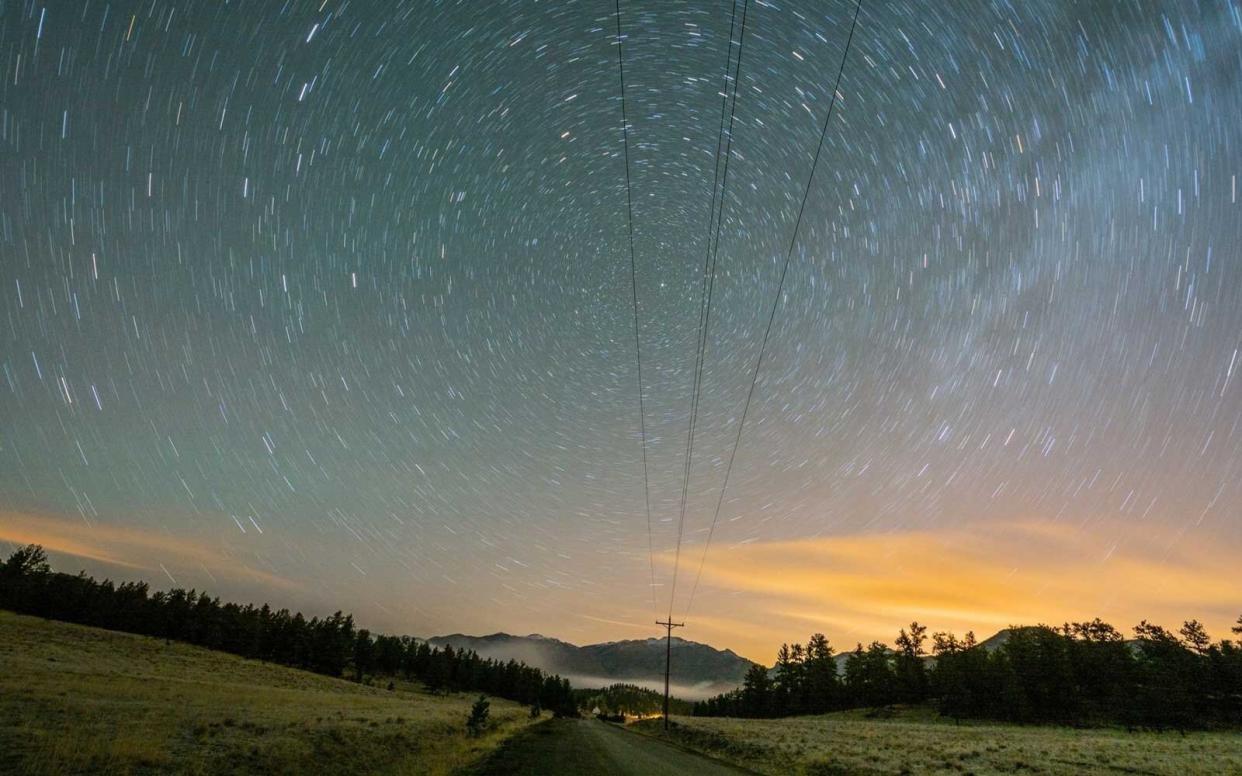A Meteor Shower Will Compete With a Bright Moon for Your Attention in Monday Night's Sky — Here's the Best Time to See It

Rachael Armstead/EyeEm/Getty Images
One of the oldest observed meteor showers will peak after midnight on Monday, giving lucky onlookers a chance to glimpse blazing fireball trails in the night sky. Called the Lyrids meteor shower, the annual event is this year interrupted slightly by a bright moon, but it should still be possible for dedicated stargazers to see a few extra-special shooting stars if the skies are clear.
What is the Lyrids meteor shower?
It's a long-running meteor shower that's active for 10 days between April 16-26 every year, though it peaks overnight on April 22-23. It's known for exceptionally bright trails left behind by each shooting star, though since the Full Pink Moon occurred on April 19, a bright waning gibbous moon is going to get in the way.
Observers can expect about 20 meteors per hour, each one traveling at around 30 miles (49 kilometers) per second, according to NASA. However, it's occassionally possible to see 100 Lyrids meteors per hour, as happened in 1982 when an unexpected outburst of 90 was witnessed in North America, and before that in 1803, when there was a display of shooting stars “in such numbers as to resemble a shower of sky rockets,” according to one observer.
Why is it called the Lyrids meteor shower?
It's named after the constellation of Lyra, where the meteors appear to originate from (what astronomers call the radiant). In practice, it's little more than a line-of-sight location. A small but very important collection of stars in the northern sky, Lyra (meaning lyre, a small harp) contains the unmissable Vega, the fifth brightest star in the night sky and just 25 light years from our solar system. Vega is a special star for astronomers because it's the benchmark for brightness that all other stars are measured against. Consequently, its magnitude (brightness) is zero. The constellation of Lyra will be at its highest in June when Vega forms the one of the three bright stars that make up the famous "summer triangle" alongside Deneb and Altair. Get to know its shape and never again will you be lost in summer.
What causes the Lyrids meteors?
Although "shooting" or "falling" stars sound like they could be the result of something explosive and dangerous, they are completely harmless and have nothing to do with stars. They're created by tiny dust particles called meteoroids crashing into the Earth's atmosphere and quickly burning up, glowing as they do so. Where does that dust come from? In the case of the Lyrids, it's the debris left behind in the solar system by the enormous tail of comet C/1861 G1 Thatcher. This ancient comet swings around close to the sun ever 415 years, intercepting the orbital path of Earth. It was discovered in 1861 just before it arrived in the solar system, and its leftovers have been providing shooting stars ever since. It's next due to enter the solar system in the year 2276.
When and where to see shooting stars
The usual advice is to get far away from the bright lights of a city, perhaps to a Dark Sky Park, and wait until after midnight when the night-side of Earth is busting straight into the dust trails that cause the Lyrids. However, since there will be a 90 percent illuminated moon rising just before midnight on April 22, it will be best to look from 11 p.m. EST. You should still be able to catch some particularly bright shooting stars even in some moonlight, but the nights of April 23 and April 24, when the moon rises after midnight, will be better nights to go stargazing and see if you can catch a falling star or two.
When is the next meteor shower?
Next up is the Eta Aquarids meteor shower, which runs from April 19 to May 28, peaking on May 6-7. Shooting stars produced by the Eta Aquarids are more numerous than the Lyrids and can reach as high as 60 meteors per hour. The culprit is the famous Halley's Comet, which was last seen in the solar system in 1986 and is due back in 2061.

